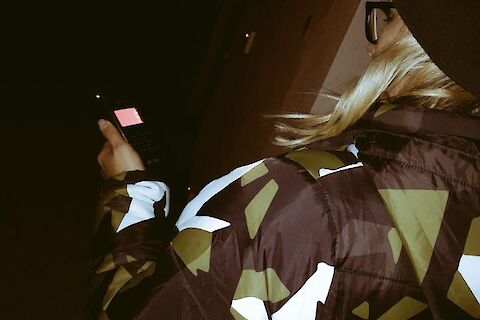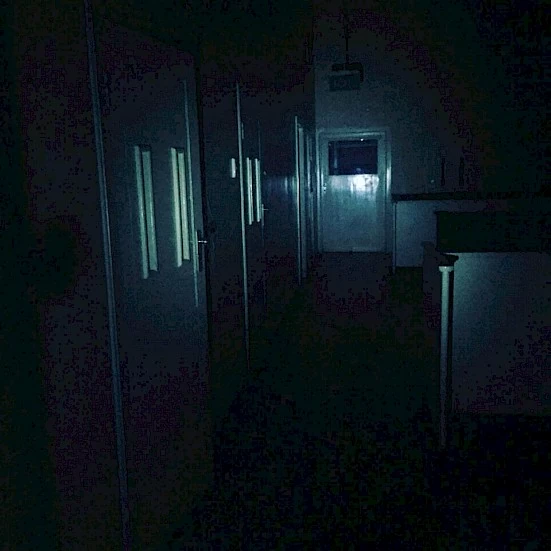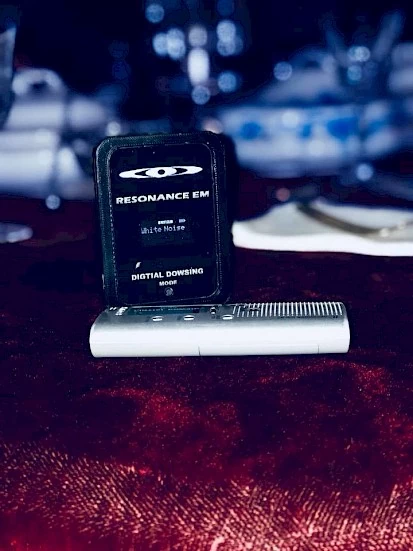

Paranormal 'Hot spots' and their influence on investigations
It is a scene typical of a paranormal reality show. We are all guilty of it, I know I certainly am. You are talking with the owner or representative of a property or location and there are a few questions that are typically asked. One of these being "Where are the hot spots?". When we ask about the 'hot spots' we are not referring to the temperature of the room (although I do always make a point to find out where the heater is because you know it gets pretty cold in Winter). When a paranormal investigator refers to a 'hot spot' it is them asking to be shown the areas where paranormal activity is most likely to occur based on people's experiences.

Is paranormal activity confined to certain areas of a location?
The answer to this like many questions within the paranormal is simply we don't know for sure. There does always seem to be a certain room in a location that is the 'most intense' or the 'most haunted room' in the location. I will admit in many investigations I have done, there are certain rooms or areas that seem to have more going on. If I was to use Black Rock House as an example, I can tell you of the two most active areas and the two areas where pretty much nothing happens at all. Why this is I don't know. Is it that a spirit stays in a certain area or room because it is somehow significant to them? Is it because they can't leave an area? If it is residual energy is it because that is where that energy is focused?
From a skeptical point of view, there could also be some other factors as to why a person believes a certain area is more active than others. Of course, we need to consider wiring etc. Is there a certain room where there might be some old wiring behind the wall and it causes people to feel dizzy, sick or ill and mistaking this to be paranormal? Are there some rooms that naturally feel a lot colder than other rooms? When a person notices that a room temperature is a lot colder than others they may already feel like it is caused by something paranormal. Maybe a room is a lot darker than others or there are trees nearby a certain window casting shadows. Sometimes just the way a room is decorated can make it feel 'creepy'.
Then there is the power of suggestion. If for example, you are attending a ghost tour or a public paranormal investigation, quite often you will be told "this is one of the most active areas" or "this is the most haunted room in this house". While they are saying so from experiences, they have also planted the idea into your head that you are in the most active room of the house. It is very possible that nothing will happen during your time in there, however, it is also likely that every sound, shadow, or feeling could be misinterpreted as being paranormal simply because you are in 'the most haunted room' of the house. Maybe it is a location you are investigating you have been looking forward to. You have heard all the stories and you are finally getting a chance to experience them for yourself. The expectation is there, and it can influence how you interpret things during the night.

Should we be asking about 'hot spots' before an investigation?
The power of suggestion is one of the biggest enemies of a paranormal investigator. We are aware of it, but we are never completely immune to it, (no matter how much we think we are). We know how easily an idea can be planted into our minds. The concepts of 'Hot Spots' are no different. If we are doing a proper paranormal investigation with the intent to collect as much data as possible, should we be asking for the hot spots?
My answer in short would be no. The location should be swept properly in its entirely with no bias. If you know in advance that a certain area has the most activity, it is possible that you may unknowingly neglect other areas or not pay as much attention as you should to these areas as you are concentrating on the traditionally more active areas. Perhaps, in the same way, I deal with the idea of researching a location beforehand, maybe the information is best left to only one person on the team. That way at the end of the night, they can potentially validate some of the night's experiences by telling you at the end where the 'hot spots' of a location are and the investigation is not influenced by suggestion.
Sometimes a location is so popular that you automatically know this information before you go in and you can't avoid it. With most locations, it is inevitable these days and we all know on our bucket list locations what the accounts, stories and supposed 'hot spots' are. It is important when we investigate to make sure that we give equal attention to the other areas in the location as well. Just because it isn't documented to be a 'hot spot' doesn't mean that you can't collect the data. You might actually end up being pleasantly surprised.
Is the area really a 'hot spot' of activity, or do we just think it is?
Sometimes in a location, a certain area may be perceived as a 'hot spot' of paranormal activity, but if you were to actually sit down and log all of the experiences and data collected over an investigation, you may be surprised to find it actually isn't as active as you first thought. Again this is where that power of suggestion comes in. For the longest time at Black Rock House, I was under the impression that the Dining Room was the most active location in the house. When I look back, it was mainly due to the feeling of the room and the 'hype' and stories surrounding it. After actually taking a step back and looking at the regular activity that we were logging in each area, there are actually a couple of areas that potentially surpass it but aren't as widely talked about. This is why it is important to make sure each area gets equal attention and why logging the data is so important. When it comes time to review your night, the numbers don't lie. They are the recount of your night.
It brings me to the final point which is something I have been touching on and researching a lot more lately and it is the concept again of psychic projection. Is a room the most active room in the house because we make it so? If we know that a room is rumored to be the 'most haunted' room of the house, if we go in with that expectation and you have a group of people focusing on that point when in the room, are they the ones making the activity happen much in the same vein of the Philip experiment? Is our collective thought making it a 'hot spot'?
At the end of the day, we don't know what a haunting is, what a ghost is, and if they even exist. There are so many questions and very few answers, and that is why we are out there doing what we do. We try our best to go in there with level heads and not be influenced. It is important to remember though, that we are human and these things do happen. Carve your own path and don't copy the reality TV shows. You don't necessarily need to know the 'hot spots' of a location when you go in if you are doing a genuine investigation. If you are doing a private case and helping someone it might be a different story. I can't stress enough about recording your results. Type up some sort of investigation report or have a blank form with certain questions that you fill out after investigating each room. When you look at it at the end of the night, you might be surprised to learn what the true 'hot spots' are. Let the location speak for itself. It will tell you what areas you need to go to. Just make sure you are listening.
If you enjoy LLIFS, consider buying me a book (otherwise known as buy me a coffee but I don't drink coffee and I LOVE books). Your donation helps to fund the LLIFS website so everyone can continue to access great paranormal content and resources for FREE!

Top pages with similar subjects
Don't forget to follow the Facebook page for regular updates
Join the mailing list to receive weekly updates of NEW articles. Never miss an article again!
Buy the latest and past issues Haunted Magazine
Check out the books written by LLIFS
Comments
-
Joseph Kapusta 5 years ago
IMHO perhaps the definition of the term "hot spots" got lost along the way, a created folklore that was perpetuated by the popular ghost TV shows to provide "proof" of something paranormal happening for the viewers' interest (and especially the network execs). If we can stick to the operative word "hot" we can justify, in a way, the possibility of an associated paranormal event as is often claimed with the appearance of a "cold spot." Ghosts are thought to consist of energy, not matter, and if the 2nd law of thermodynamics is applied to such a manifestation, the area of that occurrence would become warmer, not colder (sorry, cold spots not = ghosts). This would be the closest association with "hot spot" being applicable temperature wise. Heat is only mechanical energy, it is not a "something." The peak of most things emitting heat is in the infrared, not in our visible wavelengths. Since photons carry all kinds of energy, they are either absorbed, transmitted or reflected from "matter" that the photon hits. It has to go somewhere to be absorbed and be indicative of the entropy and area temperature equalization involved. The "hot spot" ghost would also have to maintain a constant supply of energy in order to sustain itself, thus making the entropy process observable. There should be no surface temperature of this "hot spot" (ghost) therefore the specific target area air temperature (and humidity) would have to be measured for it and compared to the rest of the investigated room. This is just my personal opinion and a small description of the entire process involved.